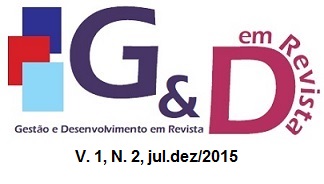EVOLUTION OF POVERTY IN PARANÁ (2003-2013)
DOI:
https://doi.org/10.48075/gdemrevista.v1i2.13289Keywords:
Paraná, Pobreza, Mercado de TrabalhoAbstract
This article aims to describe the poverty profile in Paraná, highlighting the changes between the years 2003 and 2013. Based on data from the National Survey by Household Sampling (PNAD) for the period were analyzed two types of indicators: 1) those related to household infrastructure, considered welfare proxies; and, 2) those related to the socioeconomic characteristics of household heads. Generally it was found improvements in various indicators analyzed for both the poor and for the non-poor. However, the data observation allows us to infer that the poor are in a relatively weak position compared to the non-poor. Indicators for households, indicate the improvement of quality of life in the home of persons belonging to lower extract analysis of income, due to substantial increases in the proportion of poor who come to rely on domestic consumer goods. As for the characteristics analyzed for the head of family, it is worth mentioning the greater vulnerability of the poor in terms of education and the labor market. In addition, it was found that the average income of the poor is less than 20% of the income of the non-poor. The results indicate that in Paraná poverty reduction policies must be strongly based on improving the level of income through investments in education, especially to the poorest and the creation of job opportunities.
Downloads
Published
How to Cite
Issue
Section
License
Aviso de Direito Autoral Creative Commons
Política para Periódicos de Acesso Livre
Autores que publicam nesta revista concordam com os seguintes termos:
1. Autores mantém os direitos autorais e concedem à revista o direito de primeira publicação, com o trabalho simultaneamente licenciado sob a Licença Creative Commons Attribution que permite o compartilhamento do trabalho com reconhecimento da autoria e publicação inicial nesta revista.2. Autores têm autorização para assumir contratos adicionais separadamente, para distribuição não-exclusiva da versão do trabalho publicada nesta revista (ex.: publicar em repositório institucional ou como capítulo de livro), com reconhecimento de autoria e publicação inicial nesta revista.
3. Autores têm permissão e são estimulados a publicar e distribuir seu trabalho online (ex.: em repositórios institucionais ou na sua página pessoal) a qualquer ponto antes ou durante o processo editorial, já que isso pode gerar alterações produtivas, bem como aumentar o impacto e a citação do trabalho publicado (Veja O Efeito do Acesso Livre).
Licença Creative Commons
Esta obra está licenciada com uma Licença Creative Commons Atribuição-NãoComercial-CompartilhaIgual 4.0 Internacional, o que permite compartilhar, copiar, distribuir, exibir, reproduzir, a totalidade ou partes desde que não tenha objetivo comercial e sejam citados os autores e a fonte.


